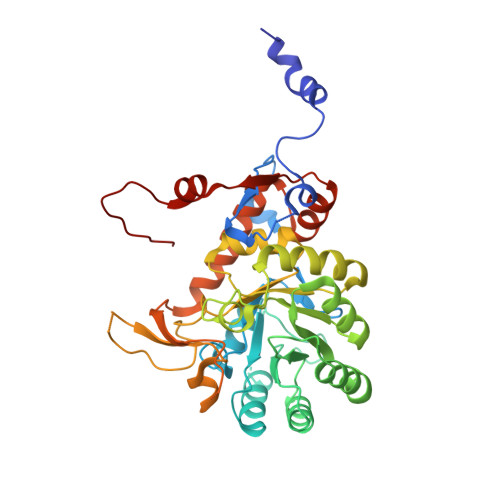Increased riboflavin production by manipulation of inosine 5'-monophosphate dehydrogenase in Ashbya gossypii.
Buey, R.M., Ledesma-Amaro, R., Balsera, M., de Pereda, J.M., Revuelta, J.L.(2015) Appl Microbiol Biotechnol 99: 9577-9589
- PubMed: 26150243
- DOI: https://doi.org/10.1007/s00253-015-6710-2
- Primary Citation of Related Structures:
4XTD, 4XTI, 4XWU - PubMed Abstract:
Guanine nucleotides are the precursors of essential biomolecules including nucleic acids and vitamins such as riboflavin. The enzyme inosine-5'-monophosphate dehydrogenase (IMPDH) catalyzes the ratelimiting step in the guanine nucleotide de novo biosynthetic pathway and plays a key role in controlling the cellular nucleotide pools. Thus, IMPDH is an important metabolic bottleneck in the guanine nucleotide synthesis, susceptible of manipulation by means of metabolic engineering approaches. Herein, we report the functional and structural characterization of the IMPDH enzyme from the industrial fungus Ashbya gossypii. Our data show that the overexpression of the IMPDH gene increases the metabolic flux through the guanine pathway and ultimately enhances 40 % riboflavin production with respect to the wild type. Also, IMPDH disruption results in a 100-fold increase of inosine excretion to the culture media. Our results contribute to the developing metabolic engineering toolbox aiming at improving the production of metabolites with biotechnological interest in A. gossypii.
Organizational Affiliation:
Metabolic Engineering Group, Departamento de Microbiolog¨ªa y Gen¨¦tica, Universidad de Salamanca, Edificio Departamental, Campus Miguel de Unamuno, 37007, Salamanca, Spain. ruben.martinez@usal.es.


















